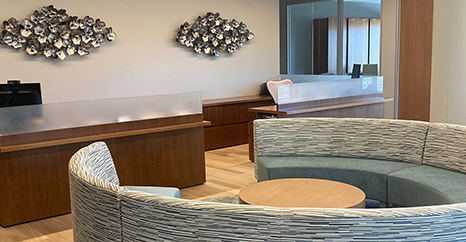The idea that every space should be a wellness space reflects a growing awareness of the importance of creating environments that contribute to physical, mental, and emotional well-being. This concept is often associated with the broader movement towards wellness and the recognition that our surroundings can significantly impact our overall health.
Let’s not confuse things…. This is not a “Zen Den”, but a space for the “whole” child to feel included, supported, equal, and empowered to ultimately feel like they are safe and belong.
Consider these 3 principles and practices when turning spaces into wellness-focused environments:
1. **Biophilic Design and Access to Nature: ** Incorporating natural elements into spaces, such as plants, natural light, and water features, has been shown to have positive effects on well-being. Biophilic design seeks to connect people with nature within the built environment, especially in urban environments or when access to the outdoors is not an option.
2. **Mindfulness Spaces with Holistic Design: ** Creating areas that encourage mindfulness and meditation can help individuals reduce stress and improve mental clarity. These spaces may include comfortable seating, floor mats, calming colors, and elements that promote relaxation and social interaction. This can be accomplished in nooks or underutilized areas, creating value where it currently doesn’t exist.
3. **Lighting and Ventilation: ** Proper lighting and ventilation can significantly impact the comfort and well-being of individuals in a space. Natural light has been associated with improved mood and productivity. Incorporating air purifiers and noise cancelling features are large contributing factors too.
Of course, all spaces should be accessible and adaptable and should allow for variability and autonomy.
The idea of turning every space into a wellness space aligns with the understanding that our surroundings play a crucial role in our overall health. As this concept gains traction, architects, designers, and planners are exploring innovative ways to integrate wellness principles into various types of spaces, including homes, workplaces, and public areas, besides educational settings.
Where can TeamPAR promote wellness in your school? Let us show you how!


